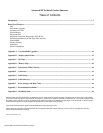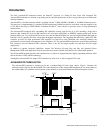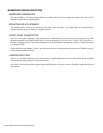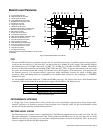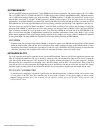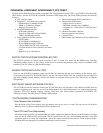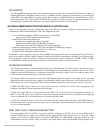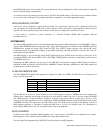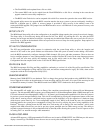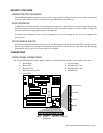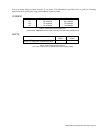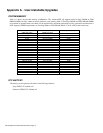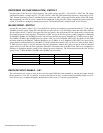Advanced/ZP Technical Product Summary • Page 8
IDE SUPPORT
The Advanced/ZP baseboard provides two independent high performance bus-mastering PCI IDE interfaces capable of
supporting PIO Mode 3 and Mode 4 devices for up to 16 MB/sec transfers. Support for ATAPI devices is provided in the
system BIOS. The system BIOS also supports Logical Block Addressing (LBA) and ECHS on both IDE interfaces. When
used in conjunction with a special driver the IDE interface operates as a PCI bus master for optimum performance in a
multi-tasking environment. One such driver is provided by Intel for the Windows 95 environment.
NATIONAL SEMICONDUCTOR 87306 SUPER I/O CONTROLLER
Control for the integrated serial ports, parallel port, floppy drive, RTC and keyboard controller is incorporated into a single
component, the National Semiconductor 87306. This component provides:
• Two NS16C550-compatible UARTs with send/receive 16 byte FIFO
- Support for an IrDA compliant Infra Red interface
• Multi-mode bi-directional parallel port
- Standard mode; IBM and Centronics compatible
- Enhanced Parallel Port (EPP) with BIOS/Driver support
- High Speed mode; Enhanced Capabilities Port (ECP) compatible
• Industry standard floppy controller with 16 byte data FIFO (2.88 MB floppy support)
• Integrated Real Time Clock accurate within +/- 13 minutes/yr
• Integrated 8042 compatible keyboard controller
Configuration of these interfaces is possible via the CMOS Setup program that can be invoked during boot-up. The serial
ports can be enabled as COM1, COM2 or disabled. COM2 can alternately be configured as an IRDA port. The parallel port
can be configured as normal, extended , or disabled. The floppy interface can be configured for 720 KB, 1.2 MB, 1.44 MB,
or 2.88 MB media. Header pins located near the back of the board allow cabling to use these interfaces.
KEYBOARD INTERFACE
The AT keyboard connector is located on the back panel side of the baseboard. The 5V lines to this connector is protected
with a PolySwitch* circuit which acts much like a self-healing fuse, re-establishing the connection after an over-current
condition is removed. While this device eliminates the possibility of having to replace a fuse, care should be taken to turn
off the system power before installing or removing a keyboard.
The integrated 8042 microcontroller contains the AMI Megakey keyboard controller code which, besides providing
traditional keyboard control functions, supports Power-On/Reset (POR) password protection. The POR password can be
defined by the user via the Setup program. The keyboard controller also provides for the following "hot key" sequences:
• CTRL-ALT-DEL: System software reset. This sequence performs a software reset of the system by jumping to the
beginning of the BIOS code and running the POST operation.
• CTRL-ALT+ and CTRL-ALT-: Turbo mode selection. CTRL-ALT- sets the system for de-turbo mode, emulating a 25
MHz AT, and CTRL-ALT+ sets the system for turbo mode. Changing the Turbo mode may be prohibited by an operating
system, or when the CPU is in Protected mode or virtual 86 mode under DOS.
• CTRL-ALT-<defined in setup>: Power down and coffee-break key sequences take advantage of the SMM features of
the Pentium processor to greatly reduce the system’s power consumption while maintaining the responsiveness necessary
to service external interrupts.
REAL TIME CLOCK, CMOS RAM AND BATTERY
The integrated Real Time Clock, RTC, is accurate to within 13 minutes/year. The RTC can be set via the BIOS SETUP
Program. CMOS memory supports the standard 128-byte battery-backed RAM, fourteen bytes for clock and control
registers, and 114 bytes of general purpose non-volatile CMOS RAM. All CMOS RAM is reserved for BIOS use. The
CMOS RAM can be set to specific values or cleared to the system default values using the BIOS SETUP program. Also,




